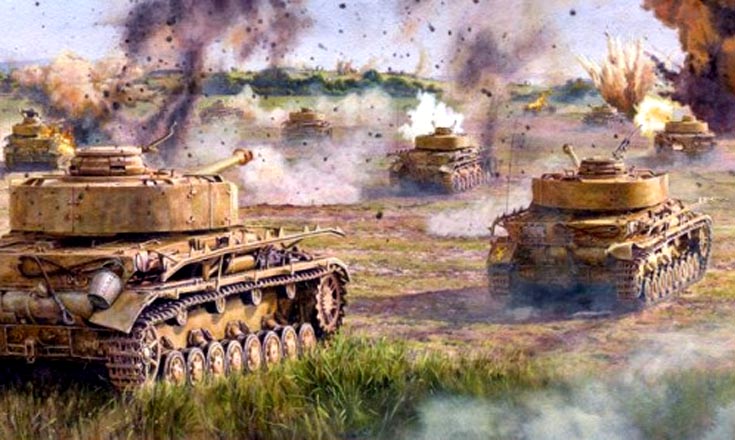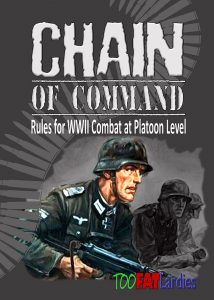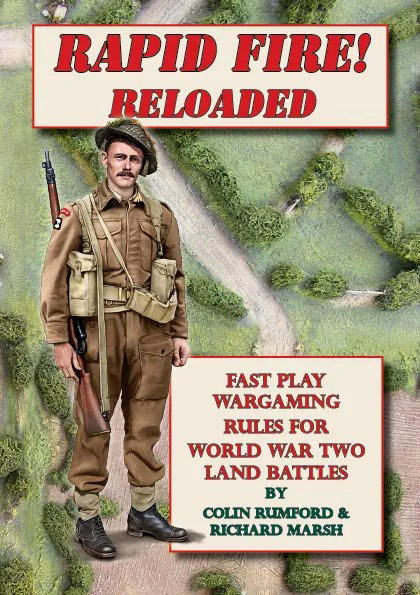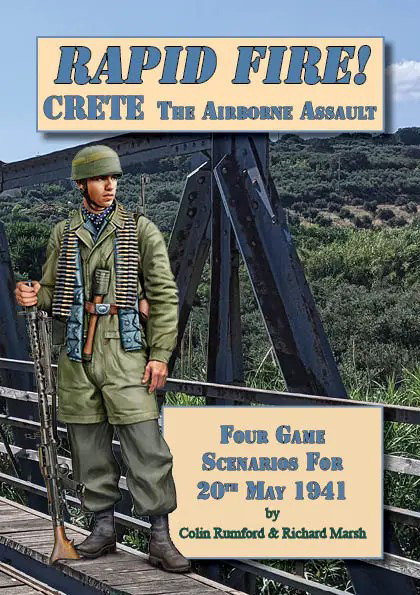
The Second World War – Playing the Period
29th January 2000, Comments Off
Fighting the Nazis on every Front!
Second World War in the Journal

I don’t play Nazis, or at least I try to avoid it. Every wargame club has its members who glorify the Nazis, and who field SS units and King Tigers at a drop of a hat. I’ve not one of them. Give me a Sherman Firefly and I’ll try to show these guys what “total war” is all about!
In the Edinburgh club WW2 was consistently popular. Some gamed it in 20mm, others in 15mm, while a few use 1/200 or 1/300 scale kit. 15mm used to be the most popular club scale, but then 28mm overtook it, largely thanks to Chain of Command rules.

For my part I’ve gamed the war in several scales in my time, but like the rest of my lead collection these came, went, and came again – changing slightly every time. First of all I abandoned 1/300 scale and 15mm. For a few years I stuck with 20mm, and branched out on 1/200 scale (10-12mm), as I liked the look of the models. Then it was all 28mm, and Chain of Command platoon-level games. Now its back to 10/12mm again, mainly using Rapid Fire Reloaded rules.
In my time I’ve gamed almost every theatre of the conflict, from Normandy to the steppes of Russia, and from the Western Desert to the South Pacific. Nowadays though, my 28mm fighting is either set in France 1940 or Normandy 1944. However, I’ve been expanding my 10/12mm stuff, largely due to RFR – another set designed to put the fun back into the period – and easy access to plastic or 3-D printed kit.

As for rules I’ve gone through many many sets . It started with a photocopied set by Donald Featherstone (c.1970), played on a small sand table. I then gravitated to Battle – Practical Wargaming set by Charles Grant (1972), published in 1972. This was what I really cut my gaming teeth on as a teenager.
Since then I’ve tried many sets. For several years I used Command Decision, before switching to Rapid Fire. Then, for a long time it was Battlegroup Panzer Grenadier. These company level rules lent themselves well to Club-night battles. I’d also tried Crossfire, but they didn’t have the same appeal.
 Then it was Chain of Command, with 28mm figures and kit, which meant platoon-level skirmish games. I liked the figures and vehicles for this – and there’s so much good stuff on the market these days. Before that I tried Disposable Heroes which I found clunky, and games were rule-checking exercises. I also tried Bolt Action, which I found full of shortfalls and which were very simplistic.
Then it was Chain of Command, with 28mm figures and kit, which meant platoon-level skirmish games. I liked the figures and vehicles for this – and there’s so much good stuff on the market these days. Before that I tried Disposable Heroes which I found clunky, and games were rule-checking exercises. I also tried Bolt Action, which I found full of shortfalls and which were very simplistic.
Far better in my view was Chain of Command. These were like a breath of fresh air. The basic system was simple but elegant, and encouraged real tactics. They’ve also re-introduced the fun level into Second World War games- probably the first set to give such an enjoyable gaming experience since Battle!

Chain of Command (or CoC) uses a platoon as its basic unit of play, but you can string these together to make a larger company-level game. Games usually begin with a patrol phase, where both sides move markers around the tabletop, which are used to establish starting (or ‘jump off’) points. This is where your squads and support weapons deploy. The patrol phase only takes a few minutes, but it cuts out a lot of time making approach moves, so you spend your time fighting rather than marching.
The order system uses dice to determine whether you can activate your squads, support teams or leaders. Its very simple, elegant and smart , and it makes you think what you’re doing before your troops appear. Movement and firing rules are very straightforward, with firing done by rolling lots of dice, but the results are believable, with units more likely to be suppressed than wiped out to a man.
Then, I came across Rapid Fire Reloaded, a reworking of the rules I’d played many years before. These scratched the long-dormant itch for battalion-level games, without getting bogged down in detail. Oh, before them I tried Iron Cross, which were good, but I enjoyed RFR games more. So now, its a straightforward split – CoC for 28mm toys, and RFR for 10/12mm, with a slowly expanding range of toys, built largely around those lovely Victrix 12mm plastic figures, and 10/12mm AFVs, used for Crete 1941, the Western Desert 1942, then Russia and Italy 1943. Besides, at my age, 10-12mm figures – and plastic ones at that – are easier for a 65 year old wargamer to lift!

Second World War in the Journal

